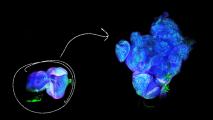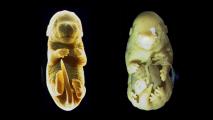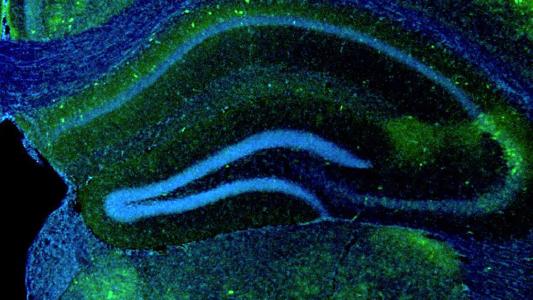A new “on/off” switch hidden in mRNA gives doctors a way to precisely control the expression of therapeutic genes — an ability that could lead to more effective treatments for countless genetic disorders.
The challenge: Genes contain instructions that tell your cells how to make certain molecules, usually proteins. Almost every cell in your body contains the same collection of genes, but a cell will only make proteins for the genes in it that are “on” or “expressed.” That’s what makes brain cells different from skin cells, even though they all have the same DNA code.
“Currently there is no safe strategy to tune the expression levels within the therapeutic window.”
Jocelyn Duen-Ya Jea and Laising Yen
Faulty or mutated genes can prevent cells from making crucial proteins, causing diseases. Replacing those genes with healthy copies could correct the issue, but only if the new therapeutic gene instructs your cells to make the right amount of the necessary protein — too much can be harmful, while too little can be ineffective — and hitting this target can be difficult.
“Currently there is no safe strategy to tune the expression levels within the therapeutic window,” Jocelyn Duen-Ya Jea and Laising Yen, researchers at Baylor College of Medicine, write in Nature Biotechnology.
What’s new? The Baylor team has now developed an on/off switch for therapeutic genes that could give doctors a way to precisely regulate their expression in patients.
“Our approach is not disease-specific; it can theoretically be used for regulating the expression of any protein, and potentially has many therapeutic applications,” said Yen, who is the corresponding author of a paper on the switch.
How it works: Genes carry out their protein instructions with molecules called messenger RNA. Those molecules deliver the instructions to the part of the cell responsible for making proteins.
The Baylor team figured out how to add a bit of code to a gene’s mRNA instructions that causes a cell to destroy the mRNA, rather than read it and create the corresponding protein. If you added a therapeutic gene with this type of mRNA to a cell, it would essentially be “off” all the time, by default.
To create a switch to turn the gene “on,” they also modified the gene’s mRNA so that it would bind to tetracycline, a very common FDA-approved antibiotic. When they stick together, the tetracycline masks the mRNA’s “destroy” code, and the cell reads it normally and creates the protein.
“This strategy allows us to be more precise in the control of gene expression of a therapeutic protein.”
Laising Yen
Putting it all together, they essentially created gene therapy which is always “off,” unless the patient takes an additional drug. How much of the drug they take lets doctors fine tune how “on” the therapy is, to make sure they’re getting the right amount of protein, and to easily turn it off at any time. This could make gene therapy safer, more effective, and essentially reversible.
“This strategy allows us to be more precise in the control of gene expression of a therapeutic protein,” said Yen. “It enables us to adjust its production according to disease’s stages or tune to the patients’ specific needs, all using the FDA-approved tetracycline dose.”
Looking ahead: So far, the Baylor team has shown that their on/off switch works in human cells and live mice, but more research is needed before they can attempt to use it to control the expression of therapeutic genes in people.
If it proves to be safe and effective, though, it could lead to better treatments for genetic disorders, which number in the thousands.
We’d love to hear from you! If you have a comment about this article or if you have a tip for a future Freethink story, please email us at [email protected].






